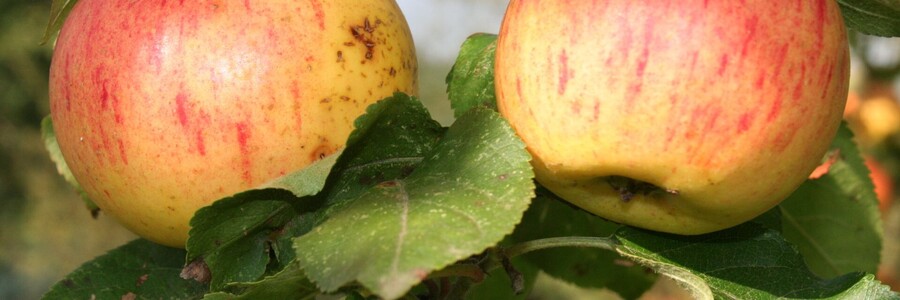Old fruit varieties - new, old superfood?
Whether apples, cherries or pears...there are plenty of old fruit trees in the meadows around Wiesbaden. Unfortunately, the trees are often no longer cared for or are infested with mistletoe. Naturefund takes care of the old trees, clears them of mistletoe and helps with the harvest. The special thing about the old fruit varieties is that they retain a few more vitamins, in contrast to newer varieties. The old fruit varieties are especially recommended for allergy sufferers.
Many old fruit varieties have evolved over hundreds of years and represent an important genetic resource for future generations. Various studies have shown that the content of antioxidants and polyphenols in old fruit varieties is up to 1/3 higher than in newer cultivars. In addition, old apple varieties are particularly well tolerated by allergy sufferers. These include, for example, the Goldparmäne (developed in France around 1500), the Goldrenette Freiherr von Berlepsch (bred in 1880) or the Gravensteiner (known since 1669).
The 4 most important old apple varieties in the meadow orchards around Wiesbaden are:
- Goldparmäne
- Gravensteiner
- Goldrenette Freiherrr von Berlepsch
- Rhenish Winter Rambur.
Goldparmäne
- Origin: The Goldparmäne originates from France in the 17th century. In the 18th century it moved to England and from there to Germany in the 19th century.
- Appearance: Red-ripened and slightly yellow, roundish
- Flavour: Mainly sweet and unique with a nutty note
- Harvest time: Begins in September
- Use: Goldparmäne are dessert apples, i.e. apples directly suitable for consumption. This apple variety is especially popular for cooking and baking.
Gravensteiner
+ very suitable for allergy sufferers
- Origin: The apple "Gravensteiner" was already known in Denmark in the 17th century.
- Appearance: Skin is yellow and flamed crimson (slight red hues), oval in shape
- Taste: very juicy, sweet, acidic
- Harvest time: From September to October
- Use: dessert apple, very popular for apple puree or compote
Goldrenette Freiherrr von Berlepsch
- Origin: 19th century Germany
- Appearance: yellow and red on the sunny side, spherical
- Taste: juicy, high vitamin C content, therefore slightly acidic
- Harvest time: From October to November
- Uses: Dessert apple, juice and must
Rhenish Winter Rambur
- Origin: It is not known exactly where the Rhenish Winterrambur comes from, but some experts claim that it originated in the 17th century in the Rhine region (as its name suggests).
- Appearance: washed-out dull red, platy round
- Taste: moderately juicy, sourish
- Harvest time: October
- Uses: Commercial fruit
So look out for these apple varieties on your next visit to the market, a welcome change from the standard varieties usually found in the supermarket.
And if you would like to support us in preserving these old varieties, then become a sponsor of meadow or even for an entire fruit tree of an old variety.

